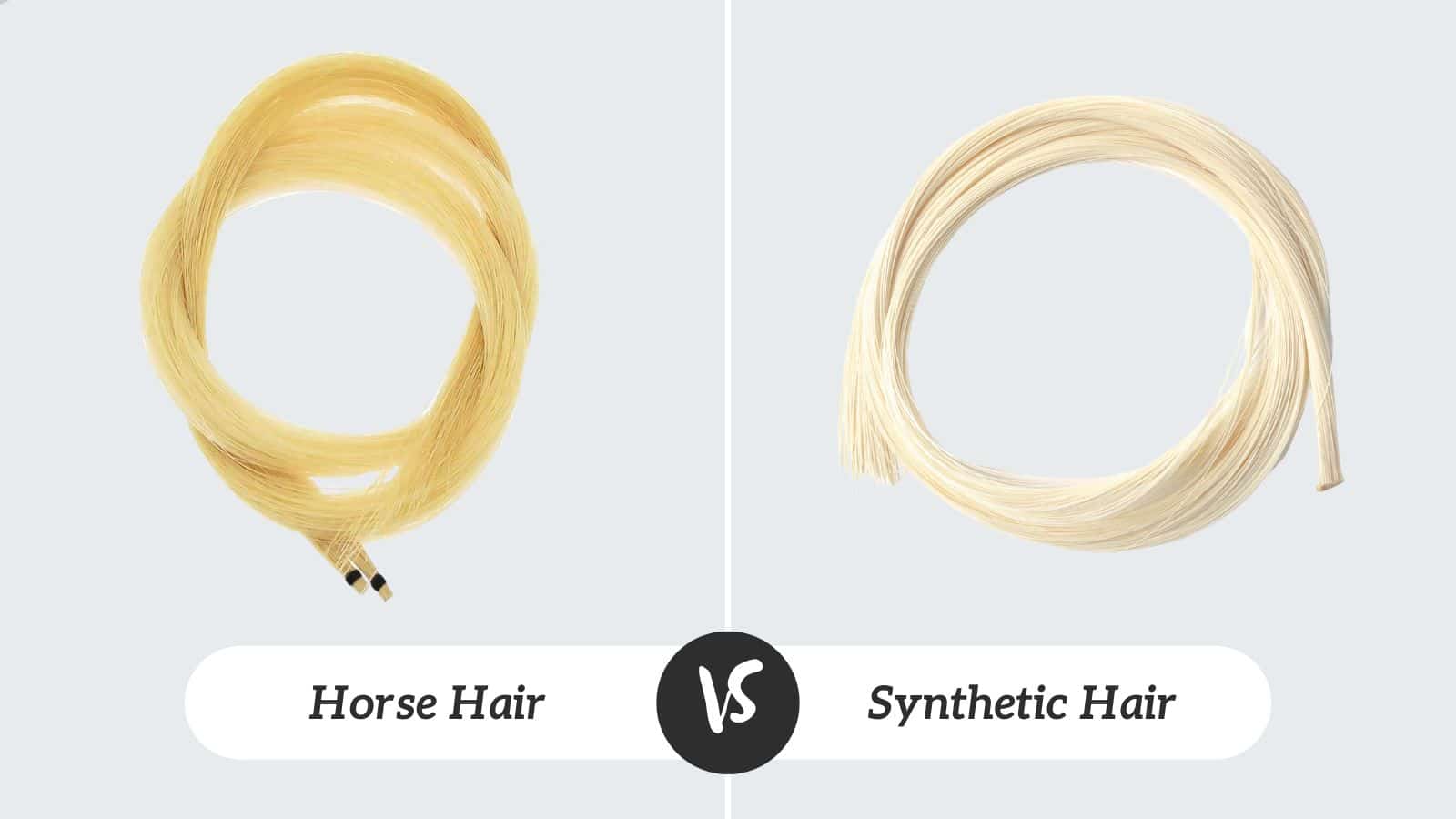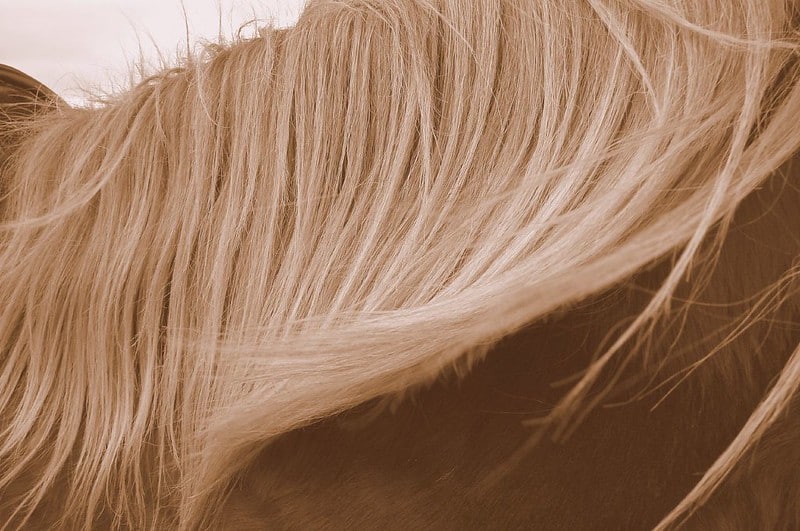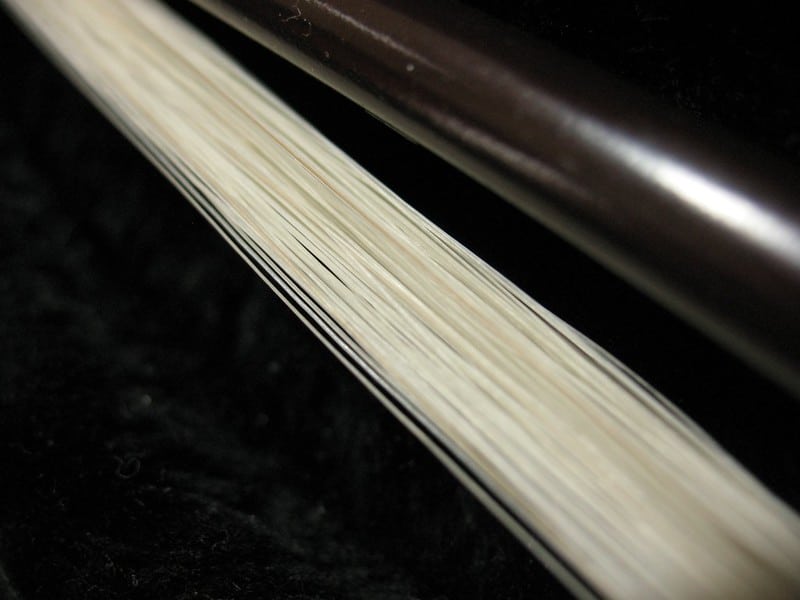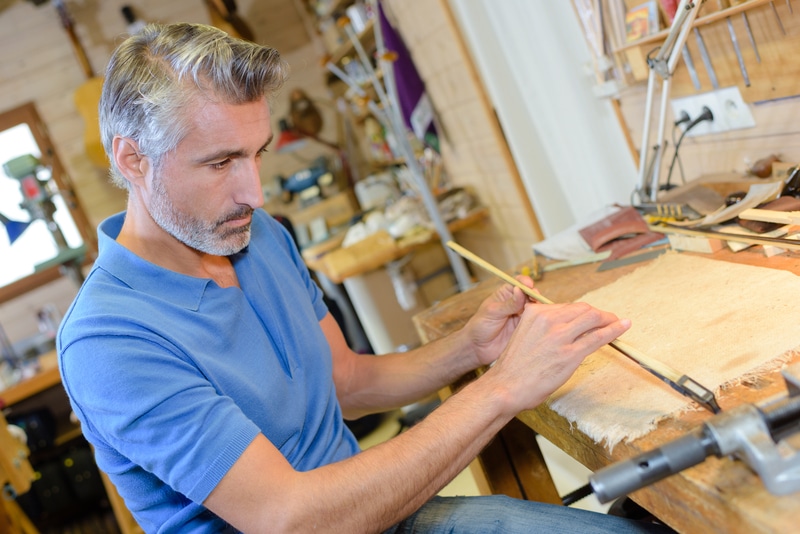
Violinists need to take their bows quite often to a violin shop to have them rehaired. However, not always they are satisfied with the freshly put new hair and that can happen for a number of reasons.
One of the reasons has to do with the type of hair applied to the bow – natural or synthetic.
Although the quality of the service also plays a very important role when it comes to customer satisfaction, the types of hair can strongly affect playability and this is what we will be discussing in this topic today.
Natural hair is taken from the tail of stallions and is usually preferred by professional players, perhaps by its tone properties and better playability.
On the other side is the synthetic hair, a non organic material that is widely used for beginner bows.
Whichever be the choice, both have advantages or disadvantages that violinists should consider when taking the bow for a rehairing service, whether it is their first visit to a violin shop or they are recurrent customers.
Violin Bow: Horse Hair vs Synthetic Hair
Excellent horse hair is cut from stallions’ tails that live in specific regions of the world, and that happens because the characteristics of horse hair may vary greatly from country to country.
Horses living in cold zones have stronger bodies and can resist to very low temperatures, especially in winter, therefore their hair is stronger and more durable if compared to horses from other regions.
That is why the hair of horses from Mongolia are considered the best in the market and can be found in pretty much any good violin shop.
Other countries that are able to produce good quality horse hair include China, Canada and Argentina. It is important to note that the hair from mares is not desirable is because it is weaker and would break more often if applied to violin bows.
Due to the properties of horse hair, violinists have to deal with some common issues as the immediate stretch and contraction of the hair when temperature changes, making it more or less tight in a matter of minutes.
A quick adjustment of tension can be made, of course, during the practice session or during a lesson, but is not desirable on stage. Most violinists are aware of this phenomenon and getting used to it is just a matter of time.
The other issue that violinists who use natural hair have to face is the inconsistency of results after their bows have been rehaired.
This is because not every single hair has the same size and thickness throughout its length.
A good luthier must know how to choose the right material and even when to do the rehairing service – temperature and humidity may seriously affect the final result, leading the customer to be more or less satisfied with the service.
Among the variety of colors that grows naturally in the tails of the stallions, the white color is by far the most used by violinists.
They are capable of producing a soft sound without scratching the strings, giving the perfect balance between softness and power of sound.
It is also true that dark-colored hair can go through a process of depigmentation to look lighter, but this process causes the hair to be weaker and more susceptible to breakage.
Hair of darker color tends to grab the strings more easily and not be suitable for the thin violin strings, but are the perfect choice for the thick double-basses strings for example.
Synthetic hair however does not present such issues, as synthetic materials tend to be much more stable than organic ones. Results are much more consistent if the synthetic hair is of good quality.
Synthetic hair is also much cheaper since it can be produced anytime and in any part of the world and they will be found in pretty much any beginner outfit.
However, professional violinists tend to avoid it because most of the synthetic hair that can be found around may not be of good quality and not providing the best playing experience.
Another drawback of using synthetic hair is the fact that the rosin does not adhere to it so easily as it would in natural hair.
The natural hair has an external layer known as cuticle, that easily creates friction. When rosin is applied, it just enhances the natural capabilities of the hair.
The synthetic hair, on the other hand, lacks this cuticle and consequently will not create friction so easily, meaning that it can not produce much sound if rosin is not applied excessively.
Extra layers of rosin will be necessary to create this friction, causing the instrument to be more dirty because of the powder that will be released when the violinist is playing the instrument.
Consequently, the instrument will need to be cleaned more often and more thoroughly, otherwise this layer of dust will not come off so easily. Also, the frequent interruptions for reapplying rosin are not desirable during practice sessions, let alone during performances.
Now, even if the luthier keeps the best quality hair and very well stored in his shop, a violinist may be completely disappointed with the rehairing service.
This happens because this process, although quick, is very tricky. If the amount and portion of hair has not been well selected and if the hair has not been properly stretched, the violinist will not be able to put enough pressure or get a powerful sound.
The other problem is weather: if weather conditions are not ideal, and the humidity is too high or too low, it may happen that after service is done and weather conditions change, the hair will stretch or shrink again.
If the first is the case, it may not be possible to shorten the hair again to the desired length even with the help of a good screw.
As a conclusion, a good choice of hair for the bow allied to a good service from a trustable luthier is enough to provide each violinist with the best playing experience.
It may also be that with the modern technologies we will have soon synthetic substitutes to horse hair available in the market that will be equally good or even better than natural hair and that fits both beginners and professional players.



